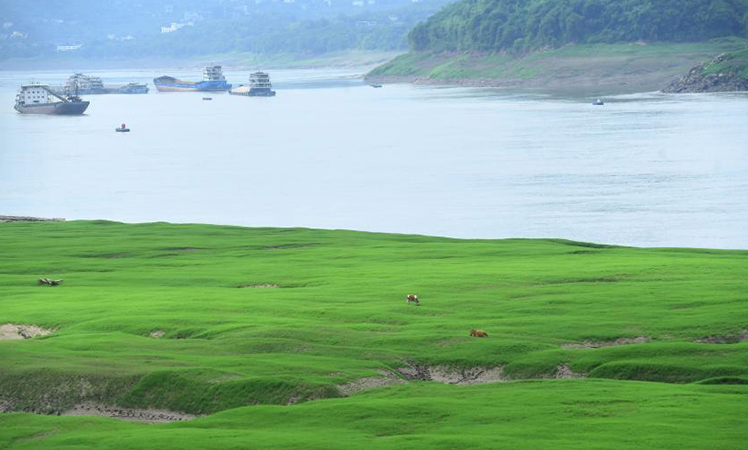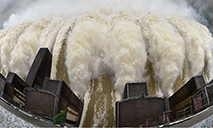Team monitors environmental air quality with nothing but their sense of smell in E China’s Jiangsu

An odor smeller smells a bag containing a sample of odor-filled air. (Science and Technology Daily/Jin Feng)
Sitting inside a special office, Wang Junfei opened up a bag which contained a sample of odor-filled air. Then, he stuck his nose into the bag to catch a whiff of the sample, after which the man identified it and recorded all of the relevant information about the smell before calculating the odor concentration.
It has been a regular routine for Wang Junfei, a senior engineer with the Jiangsu Environmental Monitoring (JEM) team, taking up his duty to determine whether the odor concentration in each of his samples surpasses a normal pre-determined level based on his own sense of smell, having engaged in this work over the course of seven years.
In east China’s Jiangsu Province, there are nearly 200 professional odor smellers just like Wang Junfei who have contributed themselves to local environmental monitoring efforts.
Wang Hui is head of the analysis and testing department with the JEM, as well as serving in his role as a senior odor smeller. According to Wang Hui, complaints about odors have been increasing in recent years, as chemical factories, commonly regarded as the source of odor emissions, are often located not far away from residential buildings and given that citizens in China have an increasingly greater demand for a higher environmental quality.
To collect odor samples, the odor smellers will first choose a monitoring site, which is located downwind of chemical factories, according to Song Xingwei, head of the in-situ monitoring department of the JEM. Meanwhile, when collecting odor samples, the speed of the wind must be slower than 8 meters per second because if the wind is too strong, the airborne pollutants will become diffuse too quickly and in this case the odor samples won’t be representative, Song introduced.
According to Wang Junfei, there are six degrees of odor intensity (from level zero to level five) and sampling is needed only when the odor concentration is assessed to reach level three.
When calculating the intensity of the odor samples, the staff members will first distinguish between air samples that don’t contain odors and air samples that contain diluted odors by smelling all the samples several times in a row. The odor concentration will serve as evidence of environmental pollution and based on these findings the environmental monitoring departments will punish those enterprises that are causing such environmental pollution accordingly.
In the second half of 2021, the JEM carried out five sessions of odor monitoring activities and discovered that the odor samples at two monitoring sessions exceeded the normal level.
Why are odor smellers needed for odor concentration detecting when there are a variety of advanced monitoring technologies available? Wang Junfei explained that professional odor smellers have the ability to express how they feel about the odors they smell. Wang Hui expressed that while there are other odors that are not on the monitoring list, the odor smellers can still work out their concentrations as well.
Wang Junfei introduced that an odor smeller’s sense of smell should not be too sensitive, but should be at the same level as normal people. This is because when their sense of smell is too sensitive, the monitoring results they provide will not be representative. He added that people aged between 18 and 45 years old are eligible to apply for the job.
Photos
Related Stories
- Beijing meets all national air quality standards in 2021 for first time
- 137 million Americans live in areas with poor air quality
- China sees improved air, water quality in 2021
- Chinese cities report improving air quality in first two months
- China's air quality continues to improve in 2021
- China's Shaanxi sees record air quality improvement in 2021
- China's Urumqi sees improving air quality in 2021
- Top 10 Chinese cities by air quality in 2021
- China plans targeted measures for air quality during winter games
- Beijing sets air quality record in 2021
Copyright © 2022 People's Daily Online. All Rights Reserved.









